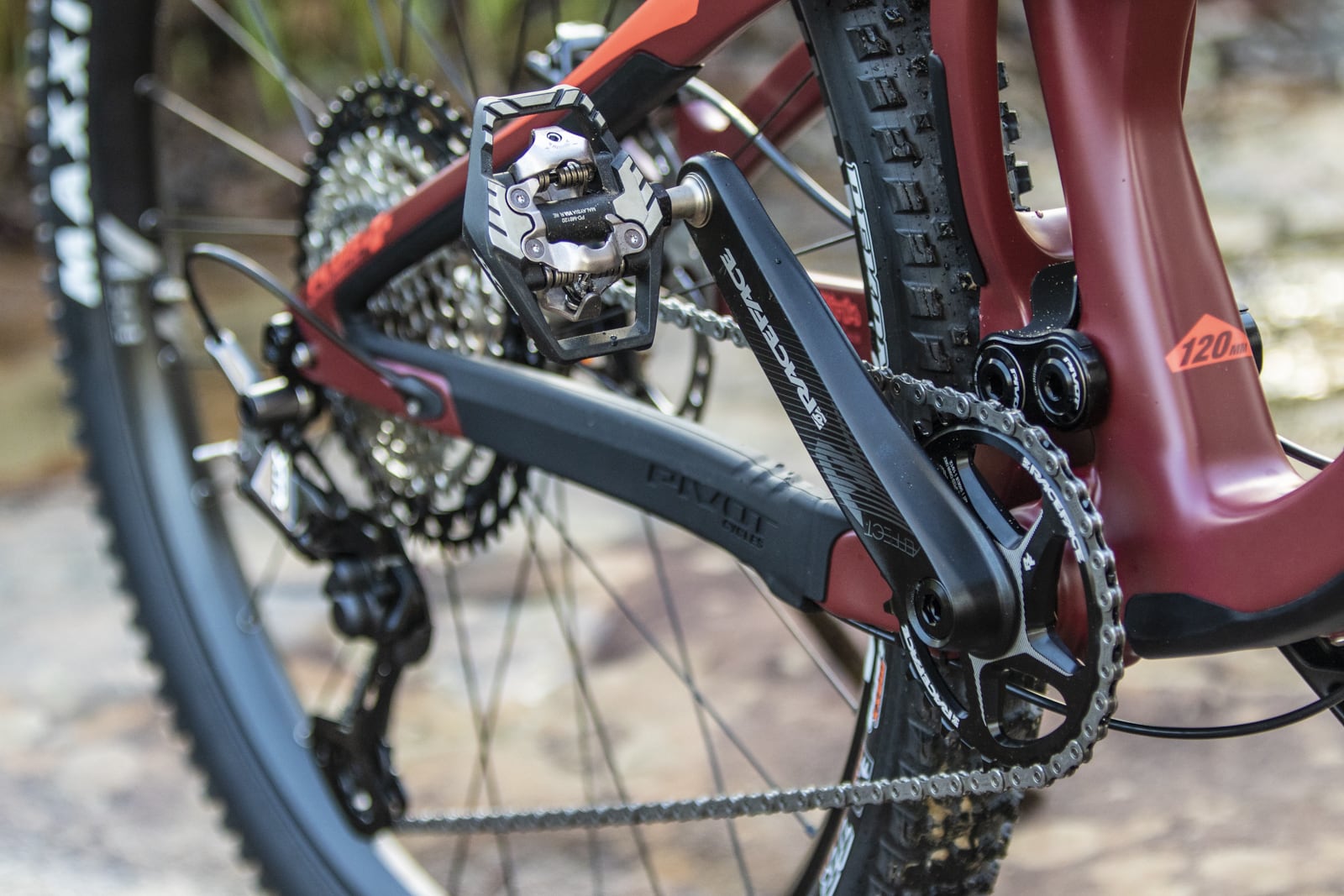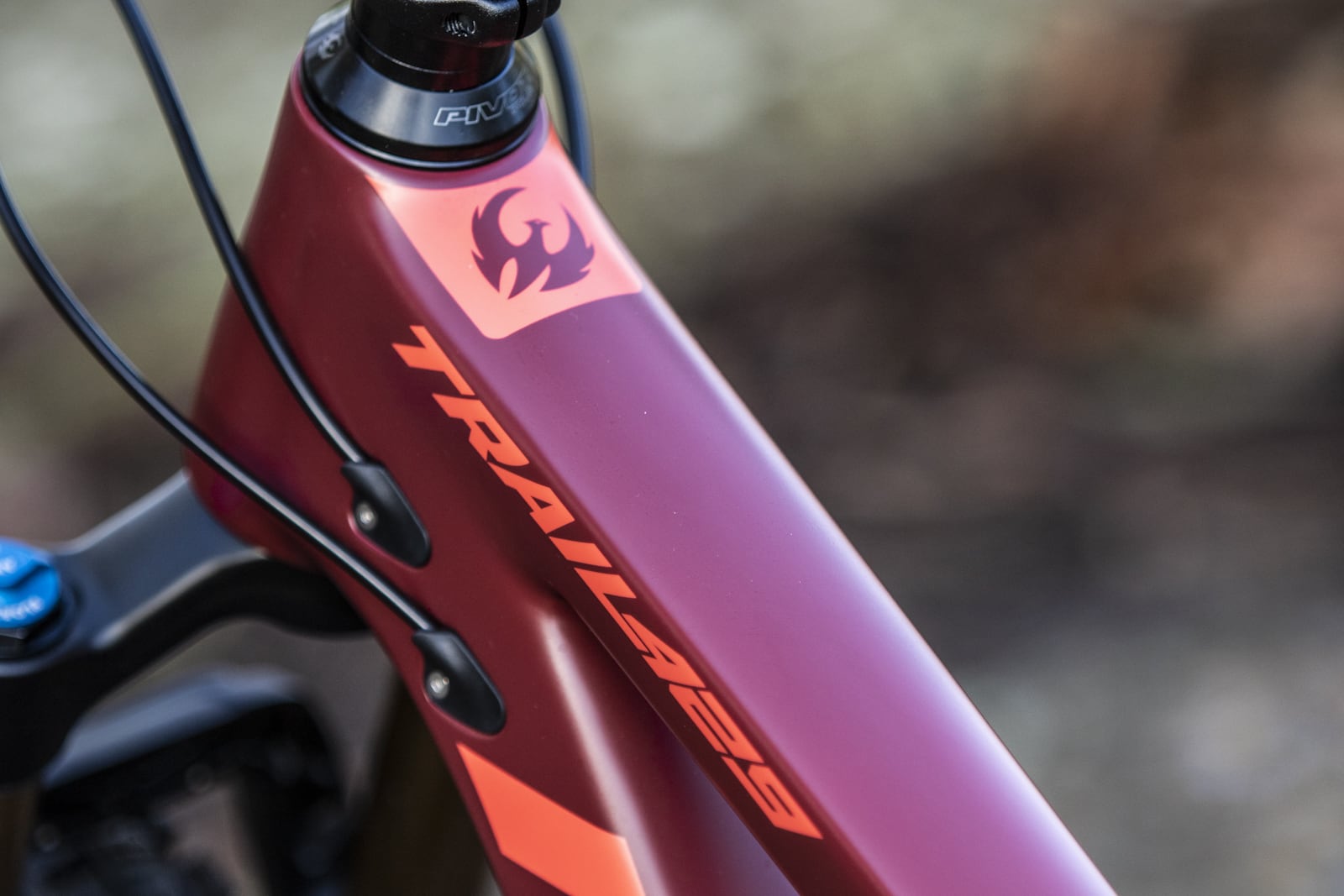Pivot Trail 429: Tested

For a lot of mountain bikers, owning more than one bike is the norm. Most of ‘them’ will – usually – have a cross-country MTB sitting beside an enduro-focused model. This allows riders to cover all types of trails they may encounter, whether it is that marathon-style event of 50 or 100km, or a weekend away with mates blasting up and down far more technical terrain where more suspension travel is needed. However, not all riders can afford two or more bikes; maintenance, storage space and the fact that, even though they may dream of crushing hugely technical terrain, the reality is they mostly ride more sedate trails.
It was with this reality in my mind that I started searching for a MTB that could do ‘double duty’ for the trails I ride – generally, a mix of XC/Trail-based but also the odd more technical route, of which there are more than a few in Sydney’s sandstone-smothered Northern Beaches, where I reside. After speaking to a few of Aus Geo Adventure’s MTB gurus I (sadly) sold two other bikes and threw down a not inconsiderable amount of cash for a Pivot Trail 429.
The best from the southwest
Pivot is an Arizona (US) bike brand that is renowned for producing top-end, very well engineered, two-wheeled trail terrors. Reflecting the brand’s residence in the ‘boutique’ section of the MTB market, Aussie pricing ranges from $7999 for the Race XT model, through to a lofty $13,999 for the Team XTR or Team XX1 models. The Trail 429 can run either 29-inch or 27.5-plus wheels/tyres and is the successor to one of the brand’s most popular models – the Mach 429 Trail – with the requisite spec and standard updates, as well as geometry tweeks to bring it back to the front end of the burgeoning ‘downcountry’ MTB market. ‘Downcountry’ is a new-ish term used to describe short-travel 29er trail bikes that offer not only near-XC-level climbing capability, but legit descending chops as well. For the everyday rider (that’d be me), the best description is simply a ‘mountain bike’, reflecting what more than 90 per cent of riders need (rather than ‘want’) for the trails they ride.

The reasons why
The Trail 429 Pro XT/XTR spec I have here (RRP$9999) offers 120mm of rear travel, matched with a 130mm Fox 34 fork up front, a seriously stiff carbon frame (with 10-year warranty), Shimano XT/XTR 1×12 drivetrain, XT brakes, a RaceFace crankset, and it rolls on DTSwiss M1700 29-inch wheels (with Micro Spline hub), wrapped in chunky Maxxis rubber. The Trail 429 brings an additional party trick to this section of the MTB market: a SuperBoost Plus (157mm) rear end. Yep, in this age of continually changing hub standards, SuperBoost+ could be viewed as another, with its additional width over the ubiquitous 148mm Boost standard. Well, it would, if it were not for the fact that Downhill bikes have been running this standard for years. Pivot cites one of the advantages of SuperBoost+ as being a significant increase in wheel rigidity and strength, owing to the wider hub that, in turn, means a better spoke bracing angle – especially handy when building up ‘tall’ 29er wheels. It also enables designers to create a shorter – but still wide – chainstay (with improved tyre and mud clearance; it can take up to a 29×2.6 tyre), thus bringing the rear wheel closer in to the seatpost and reducing the wheelbase. The result offers potential for a more manoeuvrable, ‘flickable’, bike – something not to be underestimated with today’s increasingly long, slack and low rigs. As a comparison: the Large Trail 429 wheelbase measures 1186mm, while the equivalent Santa Cruz Tallboy 4 is 1211mm and a Norco Optic stretches to 1235mm. The Trail 429 geometry is also more conservative, with a head-tube angle of 67.3 degrees and a seat-tube angle of 74.6, compared to 65.7/76.4 and 65/76, respectively.

The Trail 429 features the highly regarded DW-Link rear suspension setup. Dave Weagle’s (hence the ‘DW’) suspension system is an offshoot of the four-bar setup, and allows for a variable wheel travel path, which results in better square-edge bump performance. The DW-link also minimises the effect of pedalling forces, thus reducing ‘bob’ (vertical movement) when pedalling up out of the saddle, and any effect braking may have on the suspension, too, meaning your rear wheel/tyre stays in contact with the ground more effectively, providing optimum traction and rider control. In short, for those long, challenging climbs, this is where it’s at for those chasing every advantage.
Getting to know you
The first shakedown ride on my local trail – a mix of singletrack, short and snappy ascents and technical terrain – saw the Trail 429 impress with its stiff frame and ability to be threaded through tight, twisty stuff relatively easy, thanks to that short-ish wheelbase. The Trail 429 isn’t that light (at 13.5kg) but it ‘rides light’, a phenomenon mostly attributed to that stiff frame and the excellent DW-Link rear end, which really comes into its own ascending. I am, at the moment, far from peak bike fitness but the ability of that rear end to keep traction and momentum over bumpy, technical ascents has seen me record KOM (King of the Mountain) times in my top five on my local trail – all while being 25kg heavier and, ahem, a fair bit older than when I was at what you may generously call my peak.
The Shimano XT/XTR 1×12 drivetrain combines well with the third-party RaceFace crankset and, again, on the ascents this is most notable thanks to the fact Shimano’s MicroSpline system allows for shifting under full load. It’s hard to have to ‘re-learn’ shifting uphill (previously, like any rider, I would ease off the power before shifting gears) but the benefit of continued momentum has made it worthwhile.

What’s next
It’s still very early days with the Pivot. I have a few longer term plans revolving around some multi-day stage races and to this end I may look at dropping some weight from the bike (a lighter wheelset, for one), but for now, I am simply enjoying what is an extremely well put-together mountain bike, albeit one that’s asking price still gives me the jitters (although it’s still, scarily, not near the top-tier pricing of today’s MTBs). Stay tuned for a long-term update in the next few months to see if the Pivot Trail 429 is still proving its (hefty) worth.
RRP: from $7999 See Pivot Australia for more info on all Trail 429 variants.




